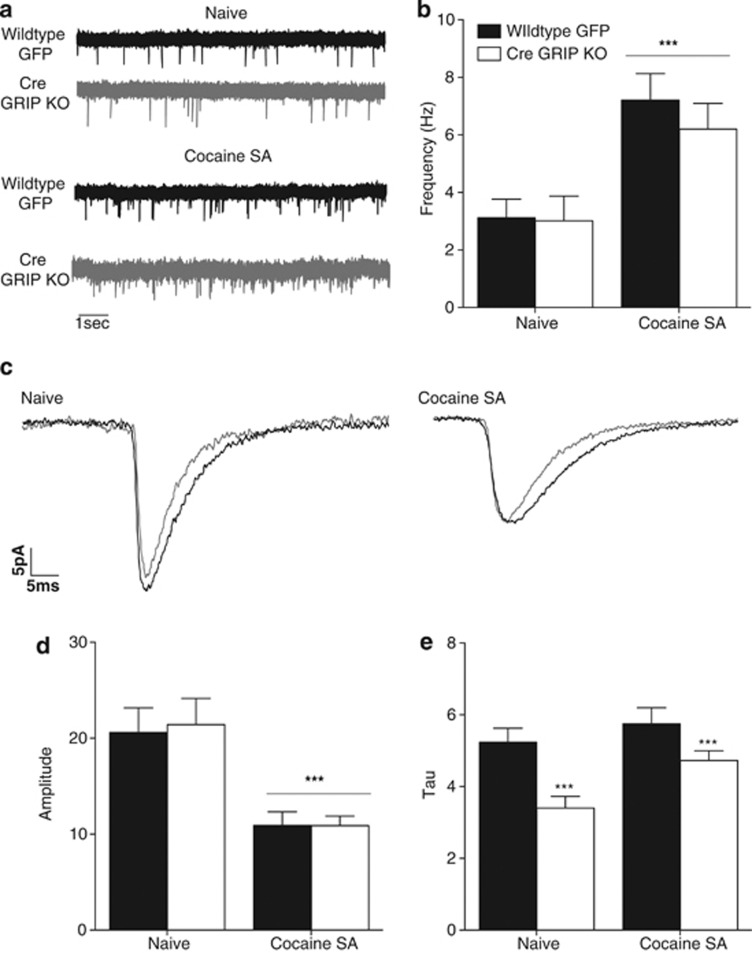Figure 4.
Glutamate receptor-interacting protein (GRIP) knockout decreases AMPA-mediated excitatory postsynaptic current (mEPSC) decay time without affecting frequency or amplitude. (a) Representative traces illustrate effects of GRIP knockout and cocaine experience on mEPSC frequency. (b) Quantification of mEPSC frequency reveals an overall increase in frequency following cocaine self-administration and extinction with no changes due to GRIP deletion (naive WT: 3.12±0.64, n=15 cells from three mice; naive GRIP KO: 3.02±0.86, n=7 cells from three mice; cocaine SA WT: 7.21±0.93, n=11 cells from three mice; cocaine SA GRIP KO: 6.20±0.89, n=16 cells from three mice; main effect of drug experience: F(1,44)=15.43, ***p=0.0003). (c) Representative traces illustrate effects of GRIP knockout and cocaine experience on mEPSC amplitude and decay time. (d) Quantification of mEPSC amplitude reveals an overall decrease in amplitude following cocaine self-administration and extinction with no changes due to GRIP deletion (naive WT: 20.6±2.56, n=16; naive GRIP KO: 21.4±2.74, n=9; cocaine SA WT: 10.9±1.41, n=14; cocaine SA GRIP KO: 10.9±1.01, n=17; main effect of drug experience: F(1,52)=25.5, ***p<0.0001). (e) Quantification of mEPSC decay time (tau) reveals a decrease in decay time following GRIP deletion regardless of cocaine history (naive WT: 5.24±0.39, n=17; naive GRIP KO: 3.41±0.32, n=8; cocaine SA WT: 5.75±0.44, n=11; cocaine SA GRIP KO: 4.73±0.27, n=16; main effect of viral injection: F(1,50)=13.26, ***p=0.0006).

